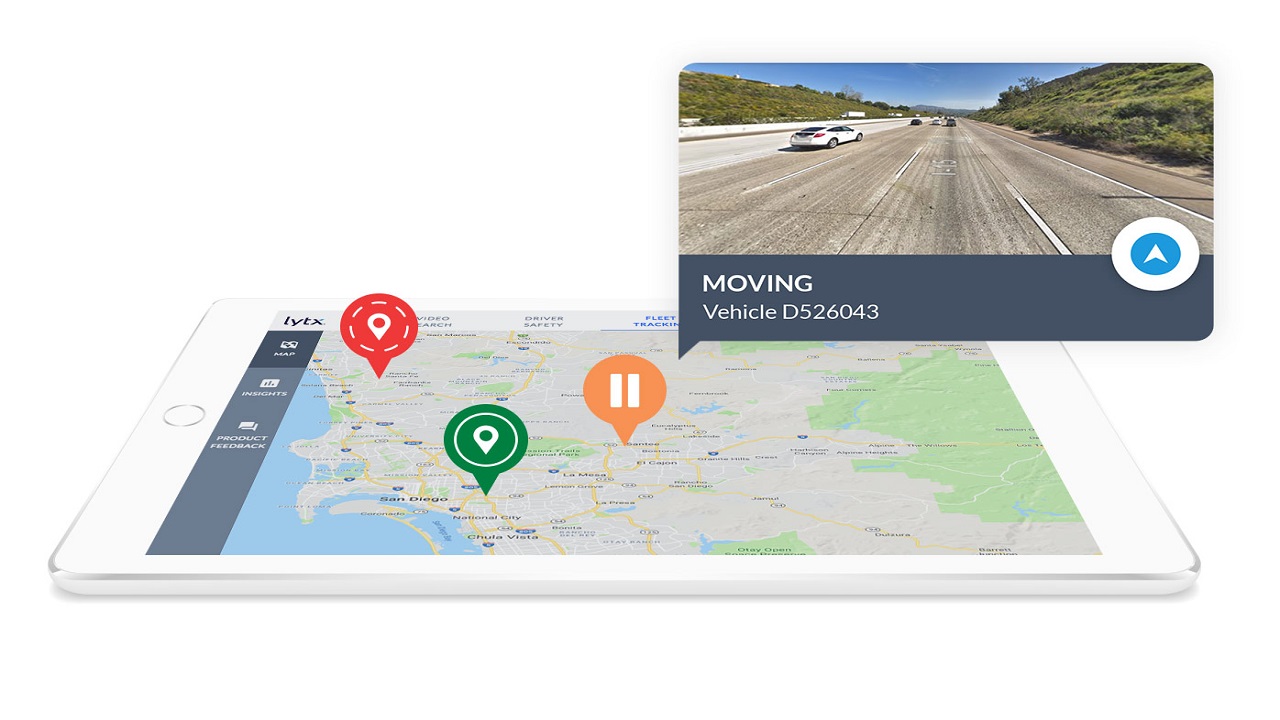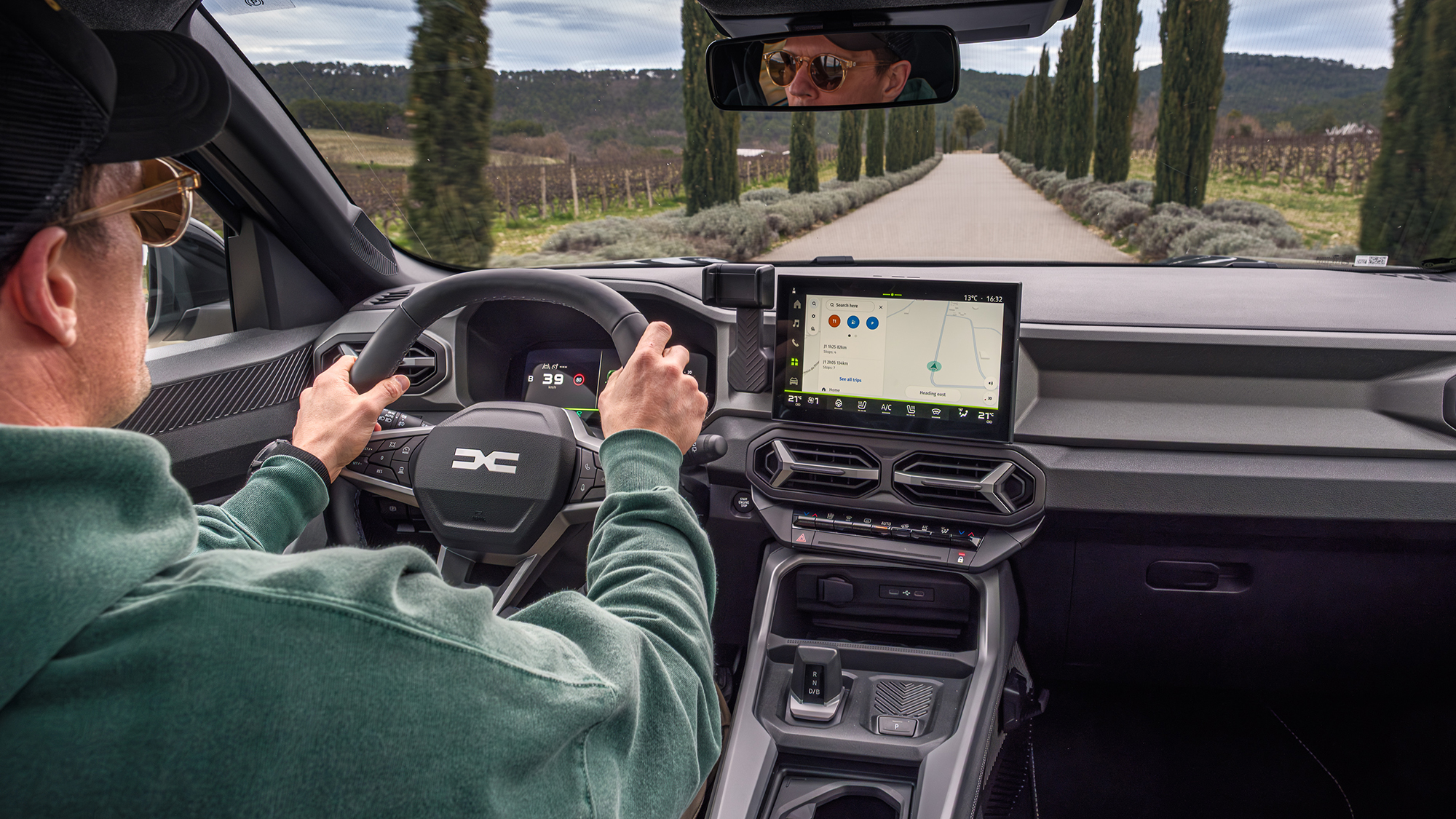Sponsored by OneStep GPS
10 essential features every good fleet tracking system must have
From geofencing to vehicle monitoring, there's a lot on here

Fleet tracking systems are crucial for any organization that operates a large number of vehicles, from delivery companies and public transportation services to emergency departments and schools.
But, no matter the industry, it’s vital that an organization chooses a fleet tracking system that’s as effective and efficient as possible.
After all, it’s not just about keeping track of your trucks: a high-quality fleet tracking system can improve safety, ensure customers get more accurate ETAs and even reduce insurance and maintenance costs.
Fleet tracking systems are complex, though, so you’d be forgiven for not knowing where to start, which is why we’re going to explore the ten essential features that every good fleet tracking system must include.
OneStep GPS is offering $10 off per vehicle to all TechRadar readers
As a TechRadar reader, you’re in luck, since you can get a $10 discount per vehicle on your next OneStep GPS purchase. What’s more, you will also enjoy a 100-day full money-back guarantee, as well as free shipping and lifetime device warranty.
1. An effective GPS
As the name suggests, a fleet tracking system must have good tracking – and that starts with GPS.
Global Positioning System networks use a global array of satellites that transmit signals to earth. Vehicles with a GPS receive these signals, and software uses a process called “trilateration” to collate all of these signals to pinpoint exactly where the receiver is located.
Put a receiver in a truck and you’ll get the exact position of the truck, too.
Sign up to the TechRadar Pro newsletter to get all the top news, opinion, features and guidance your business needs to succeed!
Locations are sent to servers at regular intervals. This information is then provided to GPS fleet tracking system operators who combine it with other data points to ensure they have a complete picture of their fleet’s locations and performance.
A good GPS will be accurate and fast, but poor GPS technology will be slow and inconsistent. When your organizational performance relies on effective GPS, it’s crucial to get it right.

2. Geofencing
Geofencing is a natural extension of an effective GPS, and it’s a vital inclusion for any high-quality fleet tracking system.
Geofencing allows fleet operators to create virtual zones and receive alerts when vehicles enter or exit those zones. That’s crucial if you want to operate an effective fleet: it allows operators to track when vehicles arrive at delivery locations or return to base, detect if vehicles have been stolen and ensure that vehicles are following routes properly.
3. Route optimization
Fleet tracking systems aren’t just about letting operators know where their trucks are going – they’re about making vehicle fleets more efficient, too.
A good fleet tracking system will use an in-depth route optimization system to provide the most efficient directions for drivers. This is crucial because it enables drivers to make more deliveries and boost customer satisfaction while allowing the organization to reduce delays, vehicle wear and tear, and fuel costs.
Route optimization relies on real-time traffic data, complex algorithms, weather forecasts, driver information and historic traffic patterns to create the most efficient routes possible. If you want a fleet management system that will improve efficiency and save your organization money, this is a crucial component.
4. Real-time driver monitoring
If you’re using a fleet tracking system, you’ll need to know exactly what your drivers are doing – because having this knowledge will help you track performance, improve safety and deliver better results for customers.
High-quality fleet tracking systems use telematics, which combines information and telecommunications, to ensure that data is sent back to operators promptly.
Telematics systems connect to the systems in tracked vehicles to monitor speeds, harsh braking and rapid acceleration, gear changes, idling and other driver behaviors.
If driver behavior is erratic, alerts are sent to the fleet tracking system. These can help operators spot unsafe driving, unauthorized driving, unnecessary stops and more – which, in turn, can create a safer and more efficient fleet.
The best systems use this data to develop driver scorecards to provide more digestible information about drivers to management. This data is also often used to help improve driver behavior and provide feedback to drivers.

5. Vehicle monitoring
It’s not just about keeping track of the drivers, either: any good fleet tracking system will also keep a close eye on the vehicles themselves.
Telematics systems will monitor fuel consumption, tire wear and pressure, engine diagnostics and more data points gathered from the vehicle.
This is crucial: it doesn’t just help operators plan more efficient routes and save money by reducing fuel costs, it also means that they can keep an eye on vehicles, spot when they’ve encountered technical issues, and get them off the road before those issues become unsafe.
Robust vehicle monitoring can also help operators plan and schedule vehicle maintenance before problems become serious – another method to improve fleet safety and reduce costs. Effective systems also provide alerts when maintenance is required or when problems are detected, making life easier for operators.
The best systems have vehicle analysis capabilities, integrated parts and tire ordering modules and predictive abilities that can spot potential issues and warn managers that action will soon be required.
Vehicle monitoring also extends to ensuring that fleets are secure: the best systems only allow vehicles to start when authorized drivers are present, and some even provide alerts for suspicious door activity.
6. Dashboards
It’s no good having all this data if it’s not presented effectively, so the best fleet management systems ensure they’ve clear, effective dashboards for operators to use.
The best dashboards display locations, alerts, driver schedules and workflows, recommendations and more, with modules that allow operators to explore data and performance in greater depth when required.
Fleet management dashboards should provide easy access to vehicle overviews, driver performance data, route histories, maintenance schedules and compliance information.
Crucially, the best dashboards provide all this information in user-friendly interfaces, and they also include customization features that allow operators to choose exactly how the information is displayed.
7. Software and hardware integrations
The best systems don’t just stop with effective dashboards, either – top-quality fleet tracking systems integrate with other business applications to improve collaboration, continuity and effectiveness.
Some fleet management systems integrate with Google Maps, while others integrate with popular CRM platforms, and yet more work alongside transportation management software, payroll apps, fuel management tools, and inventory management utilities.
This is a crucial component of any effective tracking system – because it means that the software will be able to exchange data with other tools, which means all of those tools can combine to deliver more effective insights that can further improve productivity and efficiency across the entire organization.
It’s not just about software integrations, either, because the best fleet management tools also integrate with dashcams to provide operators with a real-time view of their fleet. That’s crucial for managing fleets and monitoring drivers, especially if alerts suggest some erratic behavior or unusual conditions.
8. Mobile apps
Those integrations focus on delivering better insights and making life easier – and, similarly, the best fleet management solutions will also offer extensive mobile app support.
For operators, effective mobile apps allow them to access the latest information about their fleets from their phones and tablets. By transplanting fleet management dashboards from PCs and laptops to mobile devices, managers can easily see what’s going on without having to be at their desk. It’s another crucial way in which effective fleet management systems can improve organizational performance.
It’s not just about the managers, though: the best fleet management systems include apps for drivers.
These allow drivers to complete daily vehicle inspections with checklists, photos and videos, manage fuel with authorized payment methods, and report incidents they encounter while on the road.
Driver apps enable easy communication between drivers and dispatchers – vital for keeping everyone up to date – and also help drivers view schedules, optimize workloads, and access documentation, training, and compliance information.
9. Scheduling
Your fleet won’t operate effectively if it’s not scheduled correctly, and the best fleet management tools combine loads of data to create the best schedules possible.
A comprehensive fleet tracking system will combine driver availability and skills with traffic, route and historic information to create schedules that are as efficient as possible.
The best systems will adjust schedules if necessary by reacting to the latest traffic or driver information, and provide step-by-step satellite navigation to drivers.
This is crucial to ensure fast deliveries and reduce fuel consumption, or to keep drivers on the safest routes possible, depending on their cargo. And if it’s a goal for your organization, efficient scheduling can also improve sustainability performance.
An effective fleet management system will communicate schedules to drivers, provide real-time tracking and notifications to operators to ensure schedules are being followed, and deliver improved customer service by providing more accurate ETAs to customers.
10. Compliance support
Understandably, fleets are governed by a wealth of regulations across all industries – because vehicles need to be safe and drivers need to be alert, well-rested and capable.
To adhere to regulations across various industries, organizations must maintain accurate fleet records, driver logs, route information, and data on driver workloads. The best fleet management systems automate this data collection and generate reports.
Electronic Logging Device compliance is vital for tracking the hours that drivers have worked – and a good fleet management system will help here, with effective integration and easy reporting.
Elsewhere, fleet management systems can help ensure you’re compliant with insurance policies, emissions regulations, and verify that your drivers are only driving in areas where they’re permitted – because some may require special permits.
The best systems will also ensure that organizations are aware if drivers are behaving erratically, speeding, or using their vehicles in unauthorized ways.
When a loss of compliance can lead to huge fines, operational costs and reputational damage, it’s important to stay compliant – and it’s vital to have a fleet management system that will help you stay on the right side of the law.
There’s more to fleet management than you might think, then, from helping organizations stay compliant and safe to assisting drivers to manage vehicles and integrating with other crucial business tools.
Want to explore more about GPS fleet tracking systems? Delve into our run-down of the best fleet management systems, explore software and telematics, and discover how to choose the best fleet management systems for your business.
Mike has worked as a technology journalist for more than a decade and has written for most of the UK’s big technology titles alongside numerous global outlets. He loves PCs, laptops and any new hardware, and covers everything from the latest business trends to high-end gaming gear.
